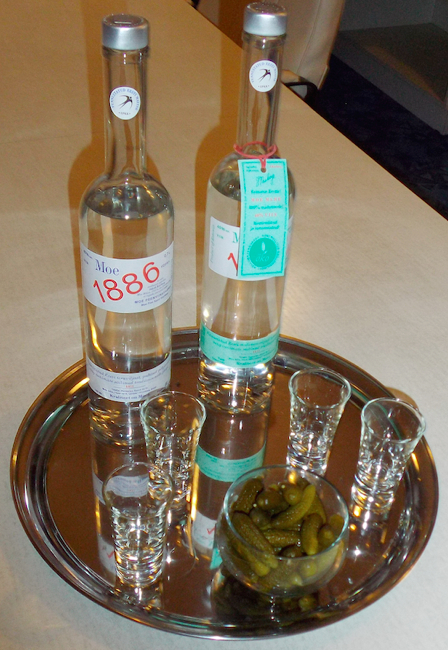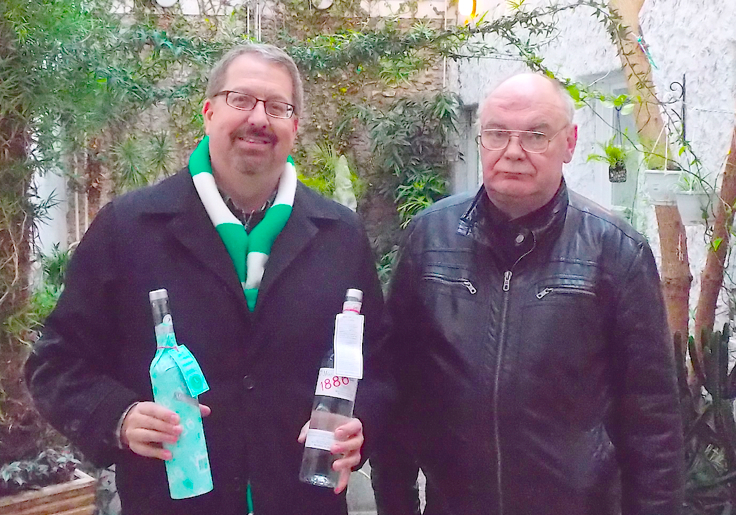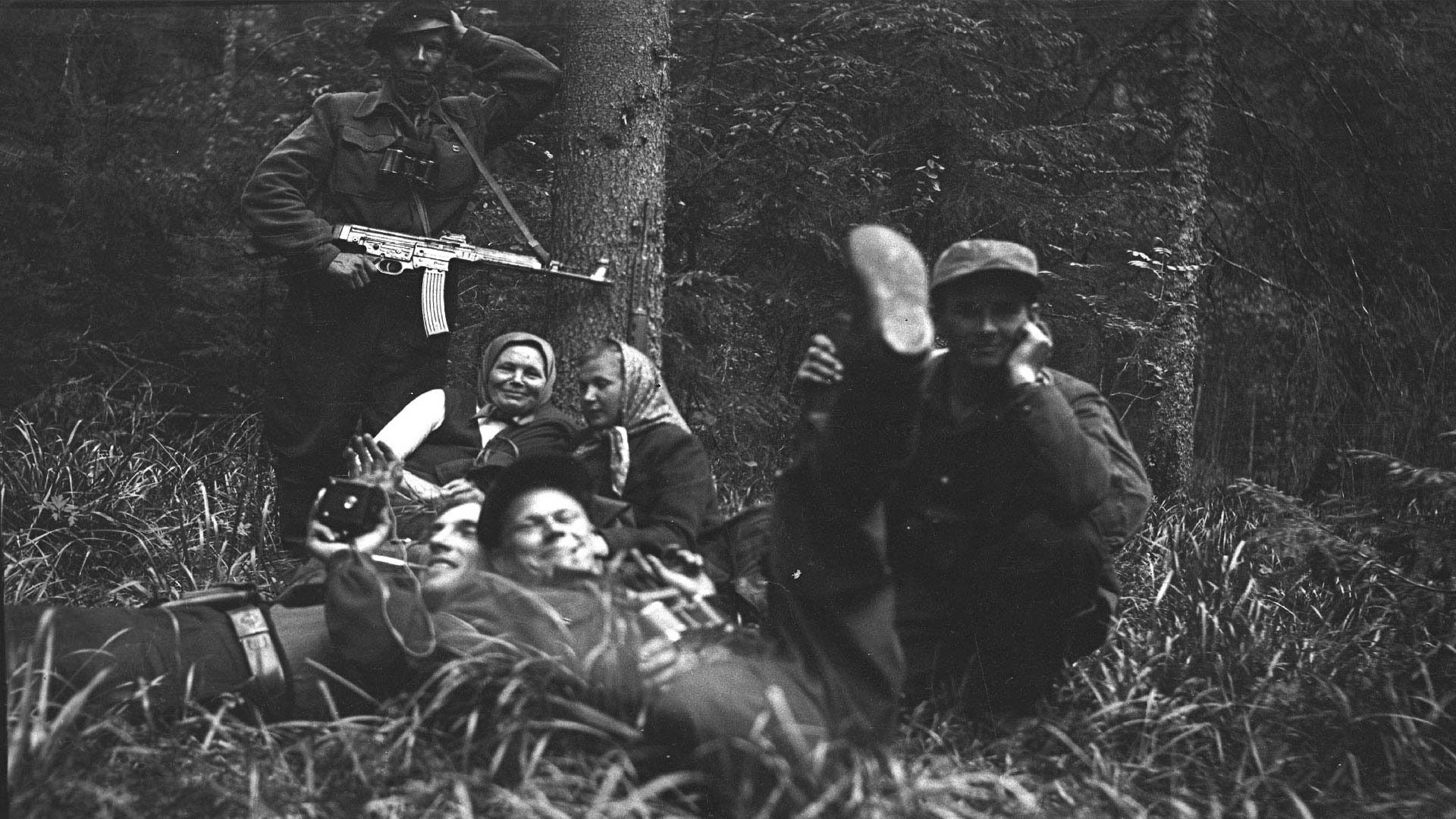Unlike the more well-known vodka countries of Russia and Poland, Estonia also has a very strong vodka past one that includes interesting stories. Even during Czarist times, Russian soldiers had a preference for Estonian vodka over the locally made product. Vodka, although arguably one of the least complex of the distilled spirits, none the less has played an important role in Estonia's history.
The aforementioned Manor Houses had an onsite “vodka kitchen” that would not only supply vodka to the Manor owner and family, but also the local residents as well. Locally grown grains, usually wheat, was used in the distilling process, and by-products of the distillation process such as the wort and the mash (the remaining grains from the wheat, potatoes, rye, etc. used in making the vodka) was fed to the livestock. The whole distillation process from grain to finished product was done in-house. There is currently a small vodka museum at the site of the former vodka distillery (www.vihulamanor.com/en/content/vodka-distillery) at the Vihula Manor Club and Spa (although as he picture shows, their vodka is “bottled in Latvia”).
 There are three major Vodka producers in Estonia, Liviko, established in 1898, which is by far the largest, and are the makers of Viru Valga. The second is Remedia (known for their high end vodka “Stön”), which was the first privately owned distillery established after Estonian re-independence in 1991. The third is Altia Eesti, which also started in Estonia in 1991, but whose shares are now 100% owned by the Finnish Altia Corporation (their top Estonian vodka is “Saaremaa”). These products are all knows as “Estonian Vodka” and use such advertising copy as “From the Very Heart of Vodka” – Stön Vodka; “Simply Estonian” – Viru Vodka; “Traditional Estonian Windmill Vodka” Saaremaa Vodka. Why then have all three of these distilleries opposed the creation of a geographic product designation for “Estonian Vodka”?
There are three major Vodka producers in Estonia, Liviko, established in 1898, which is by far the largest, and are the makers of Viru Valga. The second is Remedia (known for their high end vodka “Stön”), which was the first privately owned distillery established after Estonian re-independence in 1991. The third is Altia Eesti, which also started in Estonia in 1991, but whose shares are now 100% owned by the Finnish Altia Corporation (their top Estonian vodka is “Saaremaa”). These products are all knows as “Estonian Vodka” and use such advertising copy as “From the Very Heart of Vodka” – Stön Vodka; “Simply Estonian” – Viru Vodka; “Traditional Estonian Windmill Vodka” Saaremaa Vodka. Why then have all three of these distilleries opposed the creation of a geographic product designation for “Estonian Vodka”?
Ironically (or hypocritically in hindsight) in 2006 the European Commission wished to expand the definition of vodka (not “Estonian” vodka, but any vodka”) as a 40% distilled spirit, with no limitations as to what product the vodka was distilled from. Poland, Latvia, Lithuania, Estonia, Finland and Sweden all wanted to limit the ingredients that were made into vodka as grains or potatoes. Moving ahead to 2009, there was a push for “Estonian vodka” as a geographical nomination of vodka produced in Estonia. It was felt that regulation was needed to help to prevent confusion in the minds of the consumer, as well as help to support the cultural aspects of the product. You would thus think that those marketing Estonian vodka would be pleased with such as designation. Well that was not the case. Why? The answer lies in what makes “Estonian vodka” Estonian vodka.
One small distillery, and the makers of “Moe 1886 Vodka” by the Estonian Spirit Distillery, (www.estonianspirit.com/company), has strongly supported this geographic designation. As pointed out on their website, “MOE VODKA 1886 is the only Estonian one source vodka. The origin of each bottle can be identified until the original source – grain cultivator – by means of a special blend number, which has been put on the label of the bottle as a clip-mark.” (www.moevodka.ee). Furthermore, Moe 1886 Vodka (and it's sister, certified organic vodka, Moe Mahe 1886) is the only “Estonian” Vodka that can has the right to use symbol by the Estonian Chamber of Agriculture and Commerce (ECAC). As noted by the ECAC, “the Tunnustatud Eesti Maitse (TEM or Approved Estonian Taste) – also known as the swallow symbol – is given to quality Estonian food products whose primary raw material is of Estonian origin.” (www.epkk.ee/quality).
I had the opportunity to meet the Managing Director of Estonian Spirits AS, which owns the Moe and Rakvere Distilleries, Arno Kangur. Mr. Kangur gave me a tour the old Rakvere Distillery and was very animated and passionate about what “Estonian Vodka” really means. The reason the major distilleries do not want to have an official Estonian geographic designation is that those distilleries rely mainly on imported neutral grain spirits from large ethanol plants, particularly from the United States. The neutral grain spirit is often either diluted with local Estonian water, to reach the desired alcohol, or a final distillation process to achieve the desired product. In no cases though are these “Estonian” vodkas made with any Estonian grown ingredients. This point is not meant to imply illegal practices, as even in the United States you just need to run the spirit at least once through your still to be able to use the term “distilled by”. Some firms just simply say “bottled by”.
The question remains, does this matter? The vodka business continues to evolve, as vodka remains the leading distilled spirit in the world. Even the popular American vodka, “Tito's”, is now made using neutral grain spirits from third parties, and they continue to use the term “handmade” when describing their product. But it is suggested that for Estonia, and Estonian culture, there is a need to make clear how “Estonian” the Estonian vodka really is. The swallow symbol helps to do this, but it remains up to the consumer to determine if there is a market to support the production of authentic, ground to bottle, Estonian vodka.
Dr. Brent McKenzie
Associate Professor, University of Guelph;
Research Fellow Estonian Studies Centre




